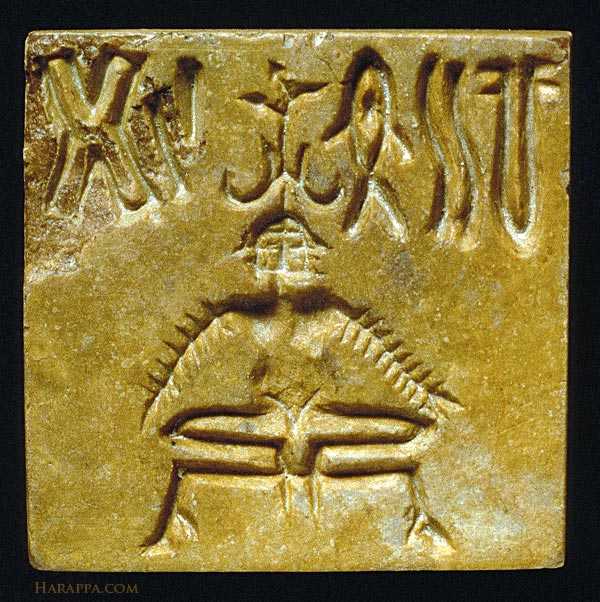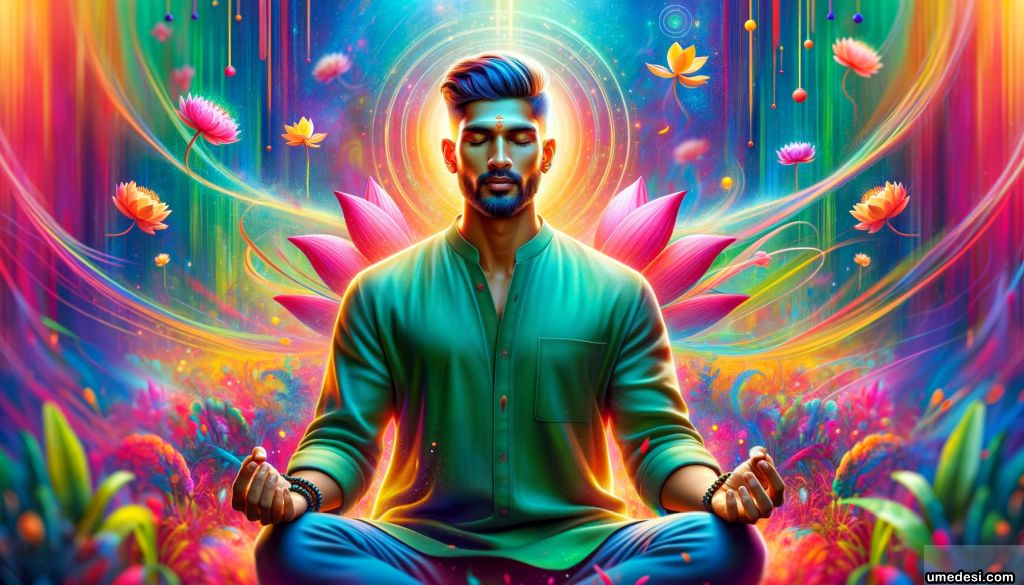Yoga is an ancient spiritual practice that originated in India over 5,000 years ago. The word “yoga” comes from the Sanskrit word “yuj,” which means to yoke or unite, often translated as “union” or “harmony.”
Summary
Yoga is a holistic practice involving physical postures, breath control, meditation, and ethical principles aimed at achieving a state of balance and harmony in the body, mind, and spirit. Originating in India over 5,000 years ago, yoga has evolved through various traditions and texts, becoming a popular form of exercise and spiritual practice worldwide.
The Origins and History of Yoga
Ancient Roots
The earliest mention of yoga can be found in the ancient Indian texts known as the Vedas, written between 1500 BCE and 500 BCE. These texts reference practices associated with yoga, such as meditation, breath control, and the chanting of mantras. A seal discovered during the excavation of the Mohenjo-daro archaeological site in the Indus Valley shows a seated figure in a yoga posture, surrounded by animals, dating back to 2600–1900 BCE. This figure is often referred to as “Pashupati” (Lord of Animals, Sanskrit paśupati), hinting at early representations of yogic practices.

Influential Texts
The most famous and influential text on yoga is the Yoga Sutras, written by the Indian sage Patanjali in the second century BCE. The Yoga Sutras is a collection of aphorisms describing the principles and practices of yoga, including the eight limbs of yoga:
- Yama (moral codes)
- Niyama (self-purification and study)
- Asana (postures)
- Pranayama (breath control)
- Pratyahara (withdrawal of the senses)
- Dharana (concentration)
- Dhyana (meditation)
- Samadhi (absorption)
Over the centuries, other significant texts like the Hatha Yoga Pradipika (15th century) and the Yoga Upanishads have further elaborated on yoga’s physical practices and philosophical foundations.
Who are Yogis?
Yogis
Yogis are practitioners of yoga, often seen as spiritual seekers or ascetics dedicated to yoga and meditation. In traditional Indian culture, yogis were highly respected for their spiritual insights and wisdom.
The First Yogi
According to Indian teachings and yogic traditions, Adi Yogi, also known as Lord Shiva, is considered the first yogi and the originator of yoga. Legend states that Shiva shared the knowledge of yoga with his seven disciples, the Saptarishis, in the forests of the Himalayas. These teachings became the basis for many yoga practices and traditions. Shiva is revered as the lord of yogis and the ultimate source of yogic knowledge.
Different Practices Used in Yoga
- Asanas (Postures): Physical postures designed to stretch and strengthen the body, preparing the mind for meditation.
- Pranayama (Breath Control): Regulating the breath to calm the mind and increase energy levels.
- Meditation: Various types, including mindfulness meditation, mantra meditation, and visualization meditation.
- Mudras (Hand Gestures): Hand gestures used to direct the flow of energy in the body.
- Kriyas (Purification Techniques): Practices aimed at cleansing the body.
- Bandhas (Energetic Locks): Techniques to control and direct energy flow.
- Shatkarmas (Cleansing Practices): Practices for detoxifying the body.
Yoga was not the only traditional physical activity or practice which originated in India, was it? Are there others?
Yes, of course. Check these out!
Evolution of Yoga
Yoga has evolved significantly over the centuries due to the influence of different teachers, traditions, and cultural contexts. Various schools of yoga have emerged, each with its unique approach and philosophy. Today, yoga is practiced worldwide as a form of exercise, stress relief, and overall wellness, leading to the development of new styles and the establishment of many yoga studios and classes.
Different Styles or Schools of Yoga
- Hatha Yoga: Focuses on physical postures and breath control.
- Ashtanga Yoga: A physically demanding practice involving a specific sequence of postures performed in a continuous flow.
- Iyengar Yoga: Emphasizes alignment and precision in postures, often using props.
- Kundalini Yoga: Aims to awaken the kundalini energy through postures, breathwork, and meditation.
- Bikram Yoga: Involves a specific sequence of 26 postures performed in a heated room.
- Jivamukti Yoga: Focuses on spirituality and activism, incorporating music, chanting, and meditation.
Yoga and Meditation Connection
Yoga and meditation are closely connected, with meditation being a key component of yoga. The practice of yoga postures prepares the mind and body for meditation by calming the mind and releasing tension. Meditation in yoga involves focusing the mind and cultivating inner awareness, leading to greater self-awareness and inner peace.

Types of Meditation
- Vipassana Meditation: Observing the sensations of the body to develop insight into the nature of reality.
- Transcendental Meditation: Using a mantra to quiet the mind and achieve relaxation and inner peace.
- Yoga Meditation: Practiced in conjunction with yoga postures and breathing exercises, focusing the mind on the breath or a particular point of concentration.
- Mindfulness Meditation: Bringing attention to the present moment and observing thoughts and emotions without judgment.
Major Schools of Meditation
- Self-Realization Fellowship Meditation: Founded by Paramahansa Yogananda, based on Kriya Yoga techniques.
- Transcendental Meditation (TM): Developed by Maharishi Mahesh Yogi, involves the use of a mantra.
- Kundalini Yoga and Meditation: Focuses on awakening the kundalini energy.
- Art of Living: Founded by Sri Sri Ravi Shankar, incorporates various meditation and yoga practices.
- Isha Yoga: Founded by Sadhguru Jaggi Vasudev, includes various yoga and meditation practices.
- Zen Meditation: A school of Mahayana Buddhism emphasizing meditation to achieve enlightenment.

What is Mindfulness Meditation? It seems different in the class I took.
The Indian type of meditation that is considered the basis for mindfulness meditation used now everywhere is Vipassana meditation. Vipassana is a Pali word that means “insight” or “clear seeing”. It is a meditation technique that originated in India over 2,500 years ago and was taught by the Buddha himself.
Vipassana meditation involves observing the sensations of the body in order to develop insight into the nature of reality.
Mindfulness meditation, which is now used in many therapeutic settings and is a popular form of meditation practiced in the West, is based on the principles of Vipassana meditation.
It involves paying attention to the present moment without judgment, and cultivating an attitude of acceptance, kindness, and curiosity towards one’s experience.
This approach can help individuals to develop greater self-awareness, manage stress and anxiety, and improve their overall well-being.
Glossary of Indian Terms
- Adi Yogi: The first yogi, Lord Shiva, who is considered the originator of yoga.
- Asana: Physical postures practiced in yoga.
- Bhagavad Gita: A 700-verse Hindu scripture that is part of the Indian epic Mahabharata.
- Mudra: Hand gestures used in yoga to direct energy flow.
- Pranayama: Breath control techniques in yoga.
- Saptarishis: The seven sages who were the first disciples of Adi Yogi.
- Sanskrit: The ancient language in which many yoga texts are written.
- Shatkarmas: Cleansing practices in yoga.
- Swadharma: One’s own duty or role in life, prescribed by inherent qualities and social position.
- Yama: Moral codes in yoga practice.
- Yoga Sutras: A collection of aphorisms by Patanjali outlining the principles and practices of yoga.
Conclusion
Yoga, with its rich history and profound practices, continues to be a source of physical, mental, and spiritual well-being. By understanding its origins, various practices, and connection to meditation, practitioners can deepen their appreciation and experience of this ancient discipline.
